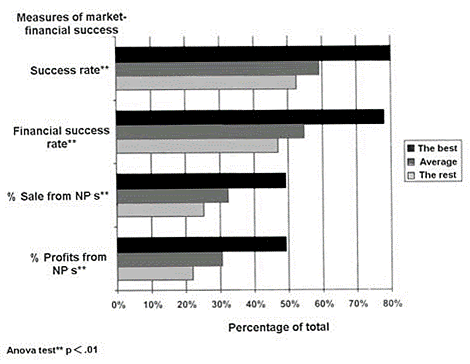FOOD
PRODUCT DEVELOPMENT
Mary Earle, Richard Earle and Allan Anderson |
| Loading
|
|
||||
|
|
Part
I,
Chapter 1
Keys to new product success and failure 1.2.3 Product development programme success The long-term success is related to the changes in the company's product mix - the structure of the product mix, the sales and profit relationships between old and new products, the growth of the market and the market share. It affects the company value in terms of goodwill, product range depth and potential, brand power, market impact and morale. Product success has also an effect on the innovation level in the company and the technological standard of the company compared with competitors (Campbell, 1999). Weak product development has a long-term effect on the production facilities, which are not renewed or updated regularly, and also on the marketing technology, which tends to become conservative. Most important is the slow growth in company knowledge. With little active product development for a number of years, the knowledge in a company is certainly less than the knowledge in the most innovative companies, and may even be less than in the direct competitors. Griffin (1997), in surveying nearly 400 companies in America, used four product programme criteria to measure financial and market success of their product development programmes - product success rate, financial success rate, sales from new products (NPs), profits from new products and the number of new products in the last five years. Figure 1.4 shows a comparison of the best 85 firms and 298 other firms.  Fig. 1.4 Long-term success of a product development programme. Success rate: % of products categorised as successes in the last five years. Financial success rate: % of products categorised as financial successes in the last five years. % Sales from new products: $ sales of products commercialised in the last five years as % of total sales. % Profits from new products: $ profits of products commercialised in the last five years as % of total profits. (Source: From Griffin, 1997 by permission of Product Development and Mangement Association, Moorestown, New Jersey.) The best companies had a higher percentage of successful new products, and also higher percentages of sales and profits from new products. In research with 800 companies in 26 industry sectors in seven countries, the food and drink industry as a whole had 21% of its turnover as new products and services, far below the leader, technology, with 69% (Anon., 2000). This survey showed that a 10% increase in the proportion of turnover generated from new products and services led to a 2.5% increase in revenue growth, year on year. |
|
 |